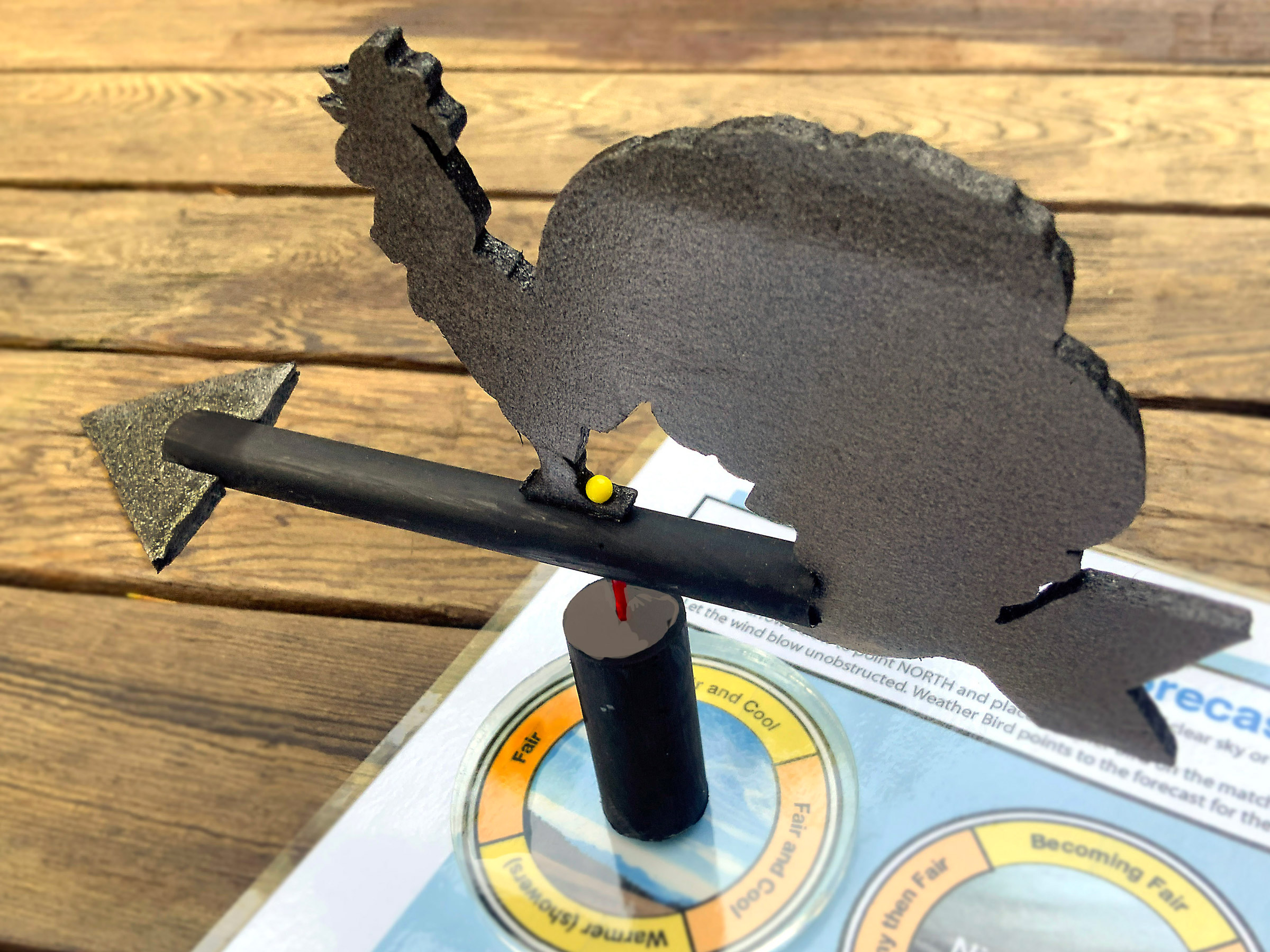The spinning Weather Bird wind vane points to tomorrow’s forecast! But how does it know?
How It Works
As warm and cold fronts cycle around low-pressure areas, they create likely sequences of clouds and wind directions. If you can figure out where you are in these swirling weather patterns, you’ll have a pretty good guess as to what weather will come next.
In this toy, the panel of cloud wheels is designed from tables of observed clouds and wind directions. Look up: If you see high, wispy clouds with winds from the north, then fair and cool weather is ahead! Why? Because you’re likely located west of a counter-clockwise-spinning low-pressure system with a cold front already past you. Keep in mind these tables are made for weather patterns in the Northern Hemisphere and can make only general forecasts. Predicting the weather is never an exact science — but you can try it yourself, learn about weather phenomena, and have fun by making your own Weather Bird!
(For more information and useful explanations about cloud types and weather fronts systems I recommend the Davis Instruments Weather Forecasting Quick Reference Card, Amazon B001444YUS.)














